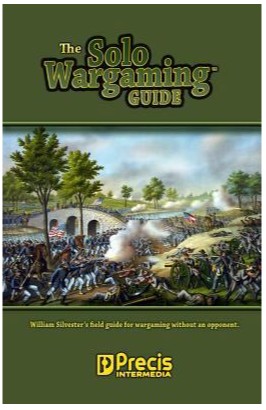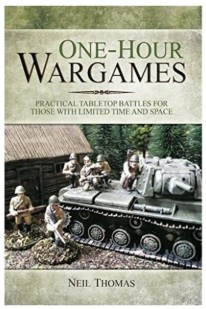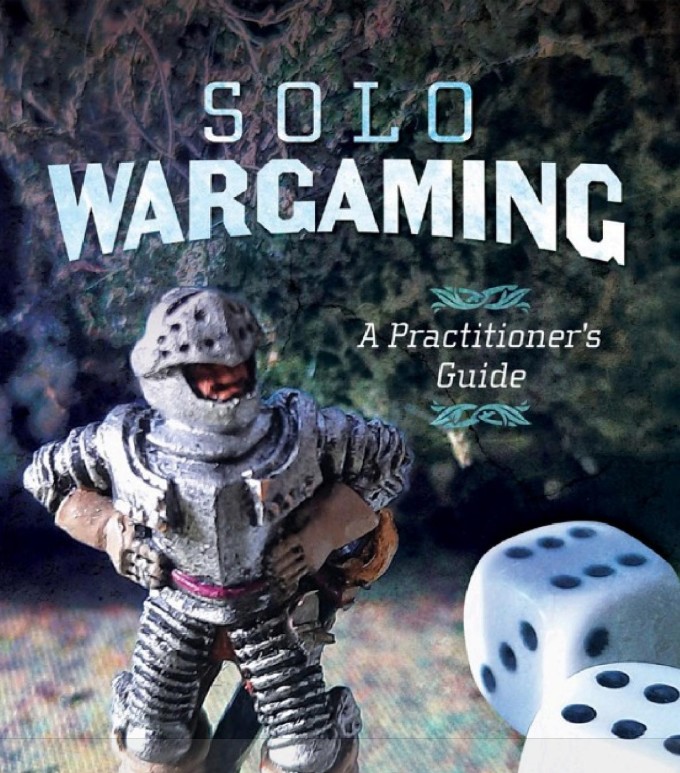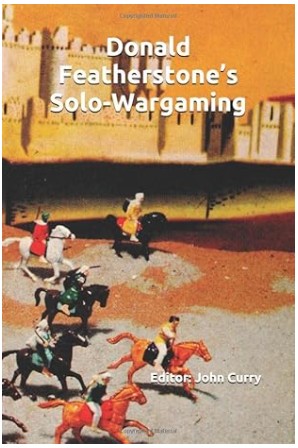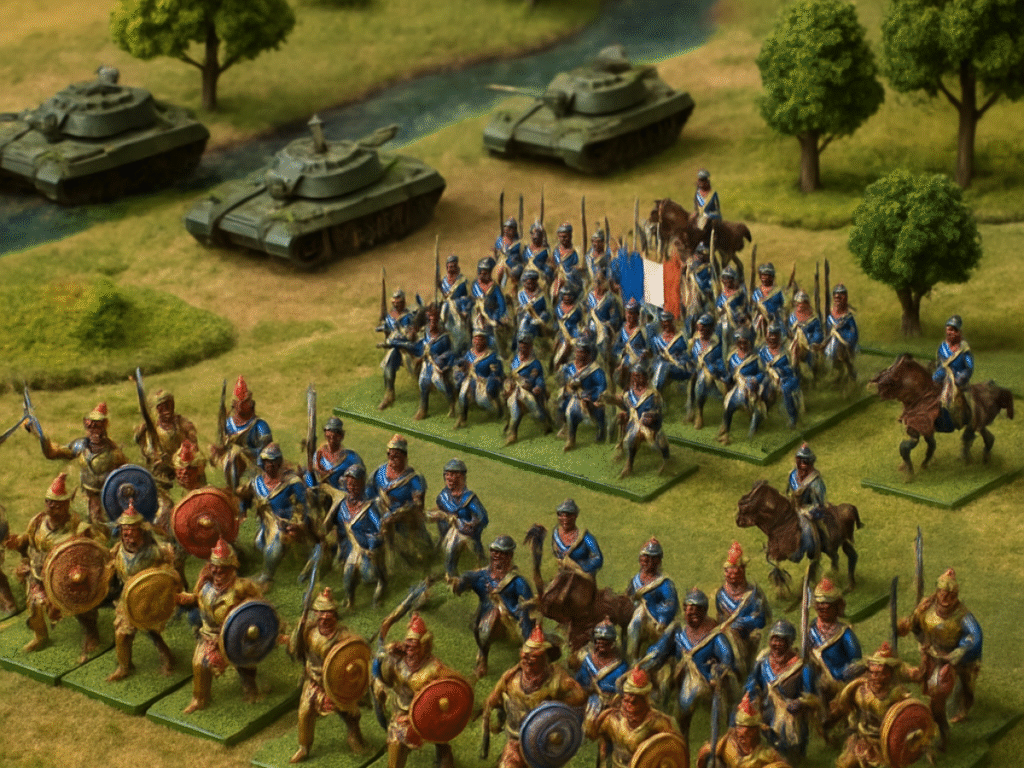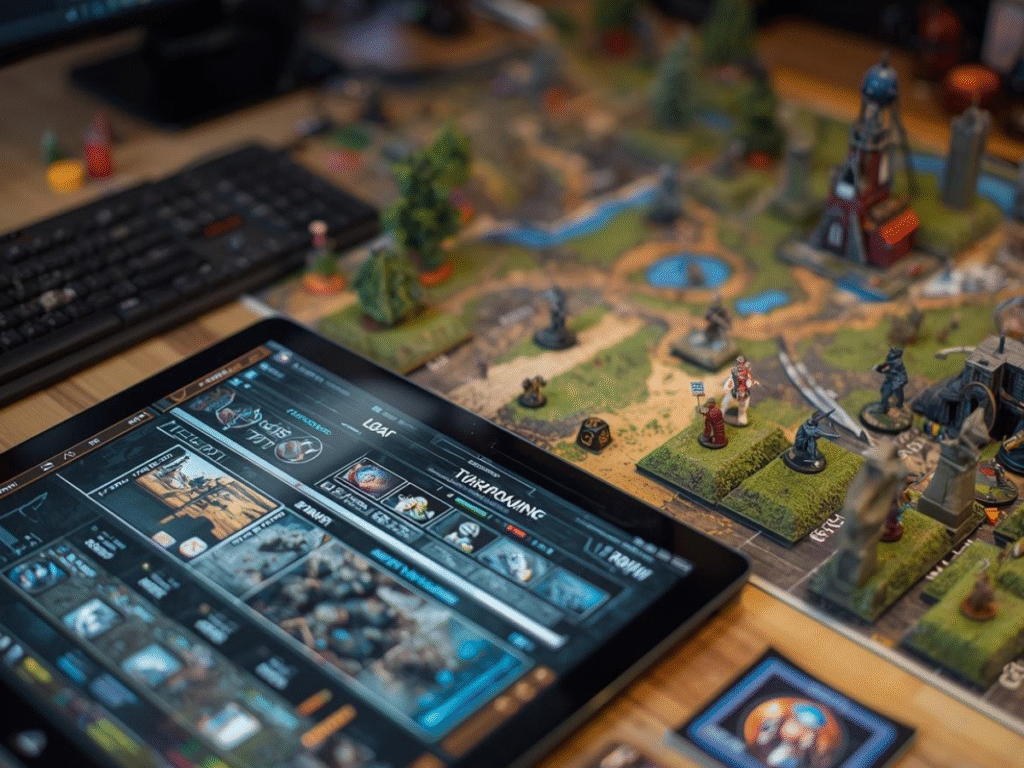What is “solo tabletop wargaming”?
Solo tabletop wargaming refers to the practice of playing a wargame by oneself—i.e. without a human opponent. Instead of two (or more) players maneuvering armies or units against each other, a solo wargamer must rely on mechanisms, systems, or aids to simulate the actions, decisions, or randomness of an opponent. The solo variant may require rule modifications, AI-style decision tables, random event decks, or deterministic scripts to “stand in” for a human adversary rather than removing an opponent entirely.
Why do many choose to play solo? Some motivating reasons:
- Availability & flexibility: It can be difficult to find opponents reliably (whether due to schedule, distance, or local community size). Solo play allows you to game on your own time.
- Creative / narrative control: As a solo player, you can often shape narratives, tailor scenarios, or experiment without needing negotiation with an opponent.
- Skill development & testing: Solo play offers a way to test tactics, army lists, or scenario ideas before playing against others.
- Immersion & challenge: Many solo systems emphasize “fog of war,” surprise events, or uncertainty to keep things fresh and unpredictable.
- Therapeutic / relaxing: For many, solo gaming becomes a relaxing or meditative hobby—a way to immerse oneself in history, tactics, or “what if” battles without needing social coordination.
This type of play is not a fallback or last resort; many serious wargamers embrace solo modes as a valid and rich branch of the hobby. (For example, see No Opponent? No Problem! Top 5 Reasons to Play Solo on Virtual Tabletop Wargames.) (Virtual Tabletop Wargames)
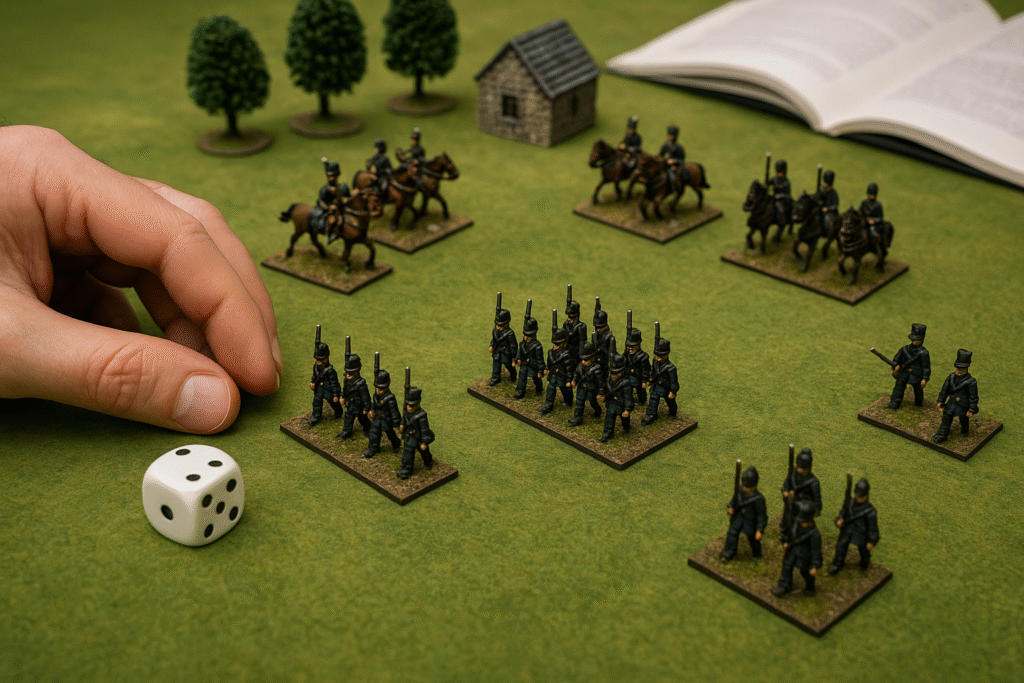
A Brief History & Evolution of Solo Tabletop Wargaming
Tracing the roots of solo tabletop wargaming reveals how hobbyists over decades adapted competitive wargame frameworks (initially two-plus players) into playable solo experiences.
Early roots and hobbyist improvisation
In the early days of miniature and board wargaming, many practitioners would “play both sides” as a teaching or scenario-testing tool. Over time, enthusiasts began developing methods to formalize that internal adjudication.
- In older war game clubs, a solo player might move both sides, often “manipulating the enemy” in a hidden or secret fashion to preserve uncertainty.
- In magazine supplements or hobbyist publications, authors sometimes included random tables or “enemy reaction charts” to inject unpredictability.
Growth in board wargaming & solitaire rules
As the board wargaming hobby matured (1970s–1990s), some designers began explicitly addressing solitaire play:
- Some wargames included “solver” modules or optional “solo rules” or bot behaviors.
- Solo wargaming was often seen in the niche of “solitaire wargames” (i.e. games explicitly designed for one player, or games with strong solo modes).
- The roleplaying / narrative gaming boom (1970s–1980s) also influenced solo mechanisms (e.g. event decks, random tables, procedural generation), which in turn informed solo wargaming design.
Recent resurgence & dedicated solo systems
In the last decade or so, solo wargaming has seen renewed interest, spurred by:
- More designers building solo-first or solo-optional rulesets.
- Use of AI techniques, decision trees, or card-driven systems to simulate opponents.
- Growing community interest in “play when no opponent is available.”
- The rise of virtual/online platforms, which sometimes allow scripting or automation to play single-player wargames (blending digital and analog).
- Publishing of works explicitly guiding solo wargamers (e.g. Solo Wargaming: A Practitioner’s Guide by David Heading) (Amazon)
Today, solo tabletop wargaming is a well-recognized branch of the hobby, with dedicated systems, articles, and communities exploring its possibilities.
Tools, Resources & Systems to Facilitate Solo Wargaming
If you want to get started—or deepen your solo tabletop wargaming practice—here is a curated overview of helpful tools, rule systems, and reading resources.
Key books & guides
A practical guide for running solo tabletop wargame campaigns, offering flexible tools to adapt any ruleset. Covers campaigns, sea and air warfare, tactical actions, and more—ideal for both beginners and veterans.
Neil Thomas tackles the challenges of time and space in wargaming, offering streamlined rules that let players complete battles in about an hour on a standard table.
David Heading explores the appeal, methods, and possibilities of playing without opponents. Covering land, sea, air, and even imagined settings, it examines why gamers play solo, the pros and cons, and practical approaches—whether running both sides or using automated opponents via dice, cards, or programmed systems.
Donald Featherstone’s Solo Wargaming is a classic guide for players without live opponents, offering creative methods for secrecy, surprise, and solo campaigns. It covers instant play, concealment, chance cards, war diaries, musket-and-shot battles, and more, making it a foundational resource for solo wargamers.
Hobbyist blogs, rule supplements, and house-rules writeups (many shared in wargaming forums such as Reddit and Board Game Geek)
We have some articles on solo tabletop wargaming:
- No Opponent? No Problem! Top 5 Reasons to Play Solo which explains motives, benefits of solo play
- Solo-Friendly Napoleonic Campaign Systems Ranked covering systems for solo play
- House Rules in Tabletop Wargaming includes discussion on solo enhancements
Rule systems & solo-friendly wargames
When choosing wargame rules or systems to play solo, you can look for:
- Systems that natively include solo or solitaire rules (bot behavior, reaction tables, narrative/event cards).
- Modular systems where you can add decision tables or AI-style logic relatively easily.
- Games with inherent flexibility (e.g. scenario-driven, campaign-driven) to adapt to solo use.
Here are a few examples / classes of systems worth exploring (you’ll want to vet whether they support solo play out of the box or via variants):
- Napoleonic Campaign / Operational systems — some of these include campaign/adjudication layers that lend themselves to solo adaptation (see the Virtual Tabletop Wargames article on solo‐friendly Napoleonic systems). (Virtual Tabletop Wargames)
- Generic miniatures rules where you overlay decision tables or “enemy AI logic.”
- Use of well-known wargames with solo modules or community variants.
- Custom solo systems built from scratch (e.g. using cards, random tables, “AI decks,” event triggers).
Tools, Aids & Accessories for Solo Tabletop Wargaming
To support your solo experience, consider:
- Decision / Reaction Tables: For example, when your “opponent” is required to move, fire, or respond.
- Event decks or random tables: Where narrative or battlefield events are drawn to surprise or test the solo player.
- AI decks or bots: Pre-programmed decks or scripts which define enemy priorities or actions.
- Scenario or campaign generators: Tools (digital or analog) to help you set up fresh battles, objectives, or constraints.
- Maps, terrain sets, and modular boards: Flexible terrain helps you reconfigure battles more easily solo.
- Record sheets, planners, logs: To keep track of hidden information, objectives, or “fog of war” elements.
- Digital aids / hybrid support: Some players use spreadsheets, small programs, or macros to simulate opponent decision logic or track state.
- House rules and modifications: Many solo players build or borrow custom rules for things like reaction delays,
- reinforcements, uncertainty, or resource constraints. (See House Rules in Tabletop Wargaming on Virtual Tabletop Wargames.) (Virtual Tabletop Wargames)
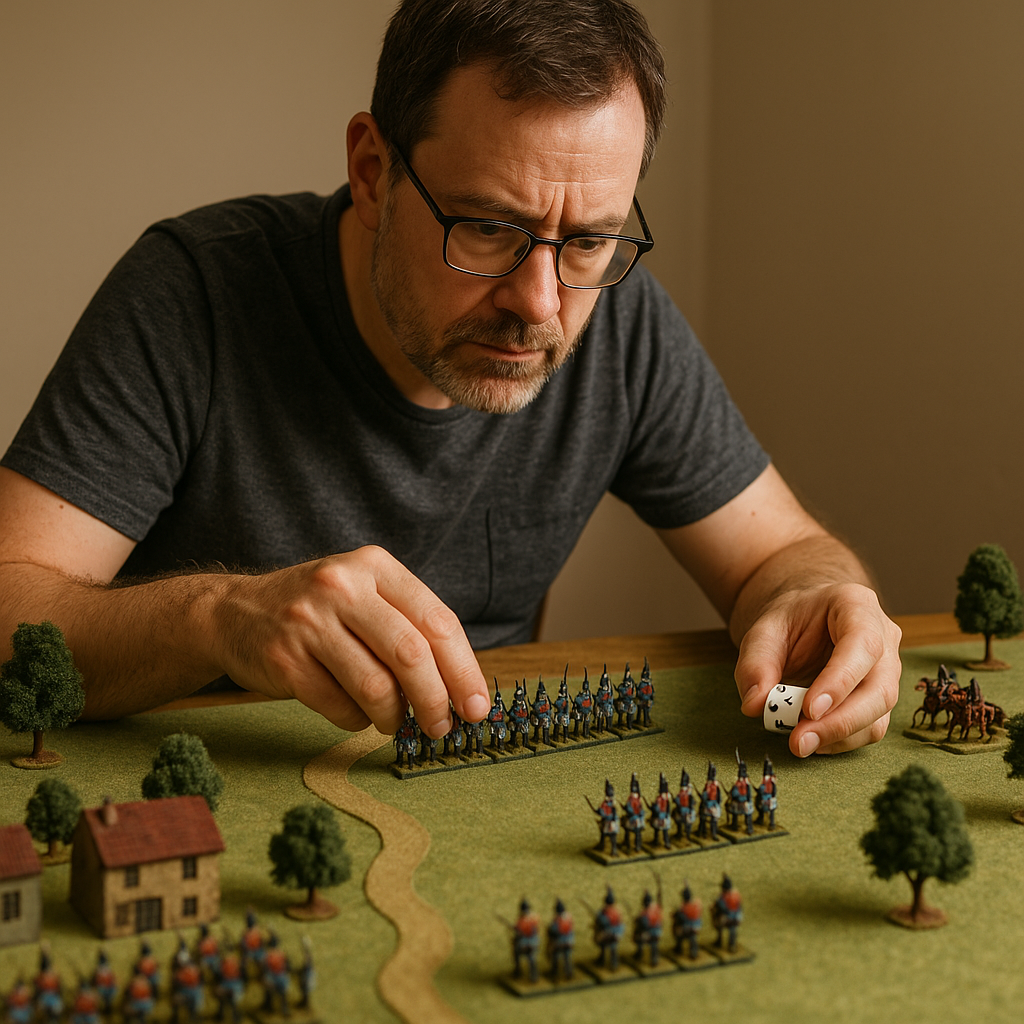
Practical steps to get started
- Pick a ruleset you like (or one you already own) and study whether it has solo variants or how easily you might adapt it with decision tables.
- Start small: pick a small skirmish scenario rather than a large battle.
- Introduce uncertainty: Use hidden deployments, random event draw, or reaction tables to replicate unpredictability.
- Log decisions and replay: Keep notes on how well your decision logic is working, iterate your “opponent logic.”
- Evolve the system: Gradually refine or customize your AI logic, add complexity, or develop campaign links.

